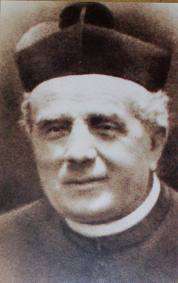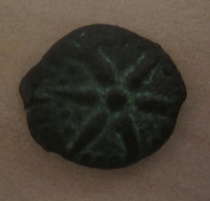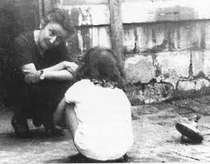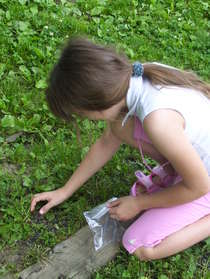![]() Detail from icon written by Br. Robert Lentz Today, Pope Benedict XVI has travelled to Assisi to hold a world day of prayer for peace on the 25th anniversary of the first interfaith world day of prayer for peace convened in Assisi by Pope John Paul II in 1986. An AP article, Rainbow of Religious Leaders Join Pope for Peace ,describes the gathering of some 300 religious leaders as well as a few agnostics. Unlike the event it commemorates, this day did not include a communal prayer, but provided quiet time for individual prayer for peace.
Detail from icon written by Br. Robert Lentz Today, Pope Benedict XVI has travelled to Assisi to hold a world day of prayer for peace on the 25th anniversary of the first interfaith world day of prayer for peace convened in Assisi by Pope John Paul II in 1986. An AP article, Rainbow of Religious Leaders Join Pope for Peace ,describes the gathering of some 300 religious leaders as well as a few agnostics. Unlike the event it commemorates, this day did not include a communal prayer, but provided quiet time for individual prayer for peace.
Religious belief never provides justification for violence and terrorism, and this diverse group reaffirms that truth.
Why Assisi? St. Francis of Assisi is known as a man of simplicity and peace. A lesser known fact, however, is that in 1219 during the crusades, he travelled across the battle lines (perhaps during a cease fire that followed a ferocious battle, to speak with the Sultan of Egypt, hoping to convert him and thus end the bloodshed.(Francis also thought he might earn martyrdom in the process.) The only reliable reports were that the Sultan received Francis with hospitality and the two of them conversed about matters of faith.
Early biographers of St. Francis say they both respected one another, and though the crusade continued, the Sultan assured Francis’ safe return across enemy lines. Stories are told about the Sultan converting to Christianity on his deathbed, but those, of course, may just be stories.
What is important to those of us who pray for peace today is that two leaders from different faiths and different states in life, met with respect and listened to one another. I imagine both came away from the meeting changed in some way. Both surely had to have grown in respect for the other.
Today’s gathering at Assisi holds a similar promise. It reminds us of the necessity of listening to one another with respect; of joining our prayers for peace, and coming away from the experience with hope that the God Who Hears All will dwell in our hearts and move them to work for peace with love, not with violence.


 Sr. Bonifacia You shall not wrong or oppress a resident alien, for you were aliens in the land of Egypt. You shall not abuse any widow or orphan. If you do abuse them, when they cry out to me, I will surely heed their cry; my wrath will burn, and I will kill you with the sword, and your wives shall become widows and your children orphans. If you lend money to my people, to the poor among you, you shall not deal with them as a creditor; you shall not exact interest from them. If you take your neighbor’s cloak in pawn, you shall restore it before the sun goes down; for it may be your neighbor’s only clothing to use as cover; in what else shall that person sleep? And if your neighbor cries out to me, I will listen, for I am compassionate. Ex 22. 21-27
Sr. Bonifacia You shall not wrong or oppress a resident alien, for you were aliens in the land of Egypt. You shall not abuse any widow or orphan. If you do abuse them, when they cry out to me, I will surely heed their cry; my wrath will burn, and I will kill you with the sword, and your wives shall become widows and your children orphans. If you lend money to my people, to the poor among you, you shall not deal with them as a creditor; you shall not exact interest from them. If you take your neighbor’s cloak in pawn, you shall restore it before the sun goes down; for it may be your neighbor’s only clothing to use as cover; in what else shall that person sleep? And if your neighbor cries out to me, I will listen, for I am compassionate. Ex 22. 21-27 Both these holy people gave their lives in service to the most vulnerable of God’s people. They were open to receive God’s love and to be God’s hands and heart on earth. They were Compassion.
Both these holy people gave their lives in service to the most vulnerable of God’s people. They were open to receive God’s love and to be God’s hands and heart on earth. They were Compassion.

 WIDOW’S MITE PHOTO: Mary van Balen “Much will be required of the person entrusted with much, and still more will be demanded of the person entrusted with more.” Lk 12. 48
WIDOW’S MITE PHOTO: Mary van Balen “Much will be required of the person entrusted with much, and still more will be demanded of the person entrusted with more.” Lk 12. 48 How we share what dwells within, that is the point. We will never know what events or thoughts moved the widow to give away her last bit of money. What we do know is that somehow, it was a response to the God Grace that lived in her heart. She held the good of others above her own needs.
How we share what dwells within, that is the point. We will never know what events or thoughts moved the widow to give away her last bit of money. What we do know is that somehow, it was a response to the God Grace that lived in her heart. She held the good of others above her own needs. 
 Caryll Houselander Last week I was feeling particularly discouraged. Selling intimate apparel was never my dream job! As I spoke with customers and cleaned out fitting rooms that had been left a mess, I wondered what a person with a graduate degree, an educator, and author was doing in my position. The Holiday shopping season looming ahead did littel to brighten my mood.
Caryll Houselander Last week I was feeling particularly discouraged. Selling intimate apparel was never my dream job! As I spoke with customers and cleaned out fitting rooms that had been left a mess, I wondered what a person with a graduate degree, an educator, and author was doing in my position. The Holiday shopping season looming ahead did littel to brighten my mood. Another woman who was highlighted in the October issue of “Give Us This Day” was someone I had not heard of before: Madeleine Delbrel. She was a Frenchwoman, daughter of a railroad worker. After considering becoming a nun, she decided her call was to be with ordinary people in the world. The reflection includes this quote: “We, the ordinary people of the streets, believe that this street, this world, where God has placed us, is our place of holiness.”
Another woman who was highlighted in the October issue of “Give Us This Day” was someone I had not heard of before: Madeleine Delbrel. She was a Frenchwoman, daughter of a railroad worker. After considering becoming a nun, she decided her call was to be with ordinary people in the world. The reflection includes this quote: “We, the ordinary people of the streets, believe that this street, this world, where God has placed us, is our place of holiness.” PHOTO: Mary van Balen When my daughter briefly entered graduate school in science and math education, she did a short stint in an affluent suburban high school physics class. Besides being disappointed in the interest and knowledge base of the students, she was surprised by the software being used. Instead of actually building small “contraptions” to test various energy sources (springs, levers, weights, etc) the students manipulated models on a computer program.
PHOTO: Mary van Balen When my daughter briefly entered graduate school in science and math education, she did a short stint in an affluent suburban high school physics class. Besides being disappointed in the interest and knowledge base of the students, she was surprised by the software being used. Instead of actually building small “contraptions” to test various energy sources (springs, levers, weights, etc) the students manipulated models on a computer program. Wasting time” mixing concoctions of baking soda, vinegar, and cabbage juice can whet the appetite for chemistry. Keeping a microscope in a kitchen cupboard, making place for a chemistry set in the basement, having art supplies easily accessible, taking long walks and picking up bugs and plants…all these things are, at some stages, more important than playing computer games or learning math online.
Wasting time” mixing concoctions of baking soda, vinegar, and cabbage juice can whet the appetite for chemistry. Keeping a microscope in a kitchen cupboard, making place for a chemistry set in the basement, having art supplies easily accessible, taking long walks and picking up bugs and plants…all these things are, at some stages, more important than playing computer games or learning math online. PHOTO: Mary van Balen Almost two months have passed since my last blog. The reasons are many. The most important is the passing of my father, Joseph Van Balen. My siblings and I have shared Dad’s care for about two years. Despite evenings when I wanted to drive home after a long day at work rather than drive to have dinner and a walk with Dad, I was always richer for having spent time with him. I hope the hours we spent together were as much a blessing for him as they were for me.
PHOTO: Mary van Balen Almost two months have passed since my last blog. The reasons are many. The most important is the passing of my father, Joseph Van Balen. My siblings and I have shared Dad’s care for about two years. Despite evenings when I wanted to drive home after a long day at work rather than drive to have dinner and a walk with Dad, I was always richer for having spent time with him. I hope the hours we spent together were as much a blessing for him as they were for me. While cleaning my parents’ home, I came across a framed print of the Sacred Heart of Jesus that hung in their bedroom. Devotion to the Sacred Heart was not big in our home. I think someone gave the picture to my mother, a convert, when she entered the Catholic Church. Jesus always looked a little wimpy to me, and I couldn’t get into the “heart on his chest” image. I donated the print to a local Saint Vincent de Paul shop figuring someone who frequented the store might want it.
While cleaning my parents’ home, I came across a framed print of the Sacred Heart of Jesus that hung in their bedroom. Devotion to the Sacred Heart was not big in our home. I think someone gave the picture to my mother, a convert, when she entered the Catholic Church. Jesus always looked a little wimpy to me, and I couldn’t get into the “heart on his chest” image. I donated the print to a local Saint Vincent de Paul shop figuring someone who frequented the store might want it. PHOTO: Mary van Balen “I am SO glad this is August 2 and the mess in Washington, for better or worse, is finally over.”
PHOTO: Mary van Balen “I am SO glad this is August 2 and the mess in Washington, for better or worse, is finally over.”